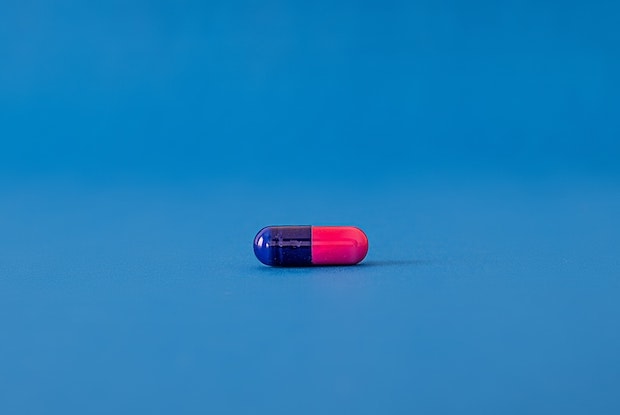Table of Contents
I. What is High Blood Pressure?
II. Types of Blood Pressure Medications
c. Angiotensin-2 Receptor Blockers
What is High Blood Pressure?
High blood pressure (HBP or hypertension) is very common. The American Heart Association estimates that around 103 million American adults have the condition, which equates to almost half of all adults in the United States. [1] If a person has high blood pressure, then the pressure in their arteries is consistently higher than healthy levels. When this occurs, the heart is forced to work harder to pump blood through the body.
a. Measuring Blood Pressure
Blood pressure levels are written as two numbers: systolic and diastolic. Systolic blood pressure is a measure of the amount of force that the heart is using against the walls of the arteries when the heartbeats. The second or bottom number is called diastolic blood pressure. This measurement shows the amount of force the heart uses against artery walls between heartbeats. To be diagnosed with high blood pressure, you must have blood pressure tested and confirmed by a medical professional.

b. Blood Pressure Readings
There are five ranges of blood pressure: [2]
Normal Blood Pressure: Blood pressure levels of 120/80 mm and lower are considered healthy and normal.
Elevated Blood Pressure: Systolic blood pressure levels are consistently between 120 and 129mm and diastolic blood pressure levels are normal and lower than 80mm. Patients with elevated blood pressure should take steps to improve their blood pressure before they develop high blood pressure.
Hypertension Stage 1: People with hypertension stage 1 consistently have systolic blood pressure between 130 to 139 mm or diastolic blood pressure between 80 to 89 mm. If you have hypertension stage 1 blood pressure, you should make lifestyle changes and your doctor may prescribe medications to help.
Hypertension Stage 2: At this stage, systolic blood pressure is higher than 140 mm or diastolic blood pressure is higher than 90 mm. It is likely that your doctor will prescribe one or more blood pressure medications to go alongside lifestyle changes
Hypertensive Crisis: This is the highest range of blood pressure. Systolic blood pressure is higher than 180 mm or diastolic blood pressure is above 120 mm. If blood pressure exceeds this level, you should wait five minutes before retesting. If blood pressure is still this high, you should seek immediate medical assistance. If you experience chest or back pain, vision changes, shortness of breath, or feeling numb or weak, call 911 immediately.
Types of Blood Pressure Medications
There are several different types of blood pressure medications. The type that is prescribed to you will depend on factors including your age, medical condition, and previous response to treatment. Many people take more than one type of blood pressure medication.
a. ACE Inhibitors
ACE inhibitors (angiotensin-converting enzyme inhibitors) work to lower blood pressure by relaxing and widening blood vessels. Common ACE inhibitor medications include Prinivil (lisinopril) and Vasotec (Enalapril). ACE inhibitors prevent the body from producing the chemical angiotensin II. This chemical narrows blood vessels, which increases blood pressure.
ACE inhibitors are a common blood pressure medication, especially when patients need to take more than one medication. When taking an ACE inhibitor, you should also reduce the amount of salt that you consume. [3]

b. Diuretics
Diuretics (water pills) are often the first medication prescribed to treat high blood pressure. Common diuretics include Bumex (bumetanide) and Lozol (indapamide) Diuretics work by increasing a person’s amount and frequency of urination. This helps remove excess sodium and water from the body. Less fluid in the body lowers your blood pressure.[4]
c. Angiotensin-2 Receptor Blockers
Angiotensin-2 receptor blockers (ARBs) include Atacand (candesartan) and Cozaar (losartan). ARBS are similar to ACE inhibitors and may be prescribed when ACE inhibitors cause unpleasant side effects. ARBs do not block the production of angiotensin II, but block angiotensin II from functioning.
d. Calcium Channel Blockers
Calcium channel blockers are prescription medications that lower blood pressure by widening the blood vessels. Common calcium channel blockers include Norvasc (amlodipine) and Adalat Chrono (nifedipine). These medications work by limiting the speed and quantity of calcium that flows into the heart. When this is limited, the heart does not beat as strongly and blood vessels can relax. [5]

Calcium channel blockers may be more effective at treating high blood pressure in older adults and people of African heritage. [6]
e. Beta-Blockers
Beta-blockers are usually prescribed when other blood pressure medications and treatments have not been successful. This is because they are not thought to be as effective as other blood pressure drugs. [7] Beta-blockers work by blocking the adrenaline (epinephrine) hormone. This lowers the speed and force that the heartbeats. Beta-blockers also work to widen veins and arteries helping blood flow more easily.
The content in this article is intended for informational purposes only. This website does not provide medical advice. In all circumstances, you should always seek the advice of your physician and/or other qualified health professionals(s) for drug, medical condition, or treatment advice. The content provided on this website is not a substitute for professional medical advice, diagnosis or treatment.
